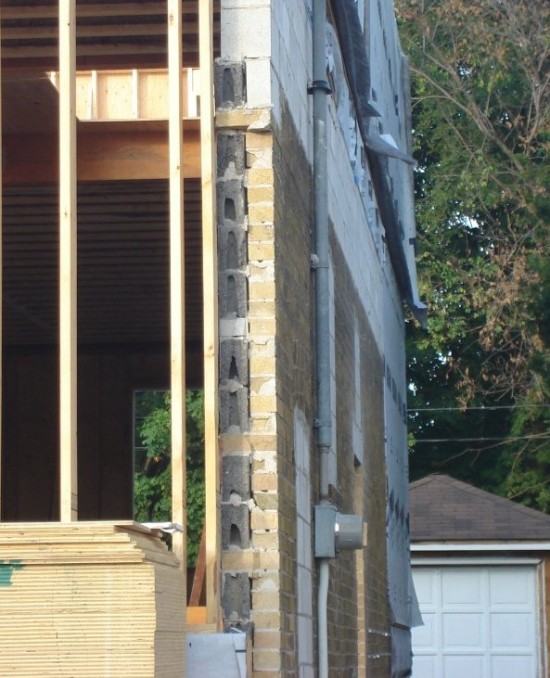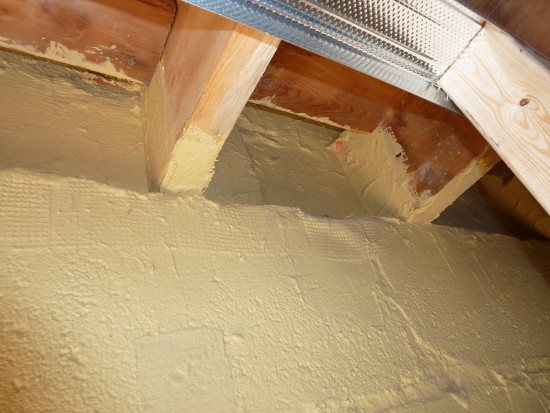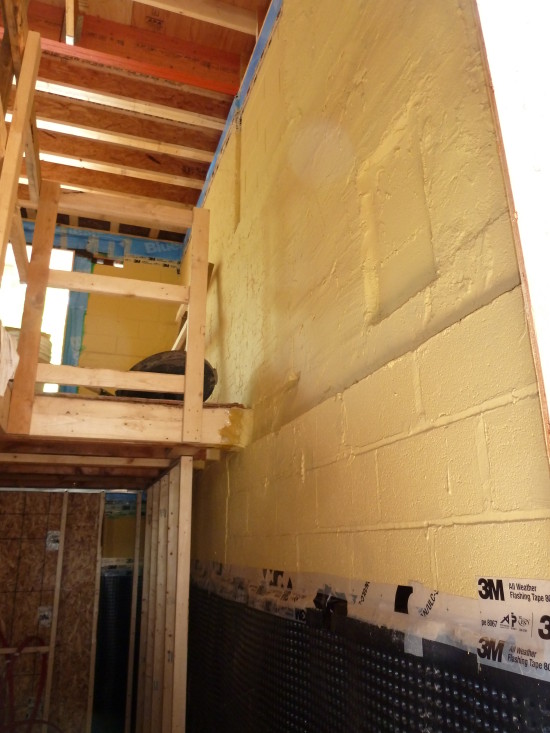As we ratchet up the performance of new and renovated homes, it has come to the point where we can no longer ignore air leakage in homes:
- Not air sealing a house wastes money and leads to discomfort and dryness.
- Not air sealing a house and insulating it may affect the durability of the structure.
Air sealing vintage, solid masonry (either block and brick or double brick) just makes sense, but how do we do it? I’ve been complaining for years at every chance I get to say how laggardly Canadians are for adopting innovative products and techniques that increase efficiency by way of simplifying the air sealing aspects of vintage homes.

Cross Section of what a 1950′s ‘Block and Brick’ wall looks like in East York. Though its true that ‘block and brick’ houses are more air tight than older ‘double brick’ homes, the walls minimum air leakage won’t come close to 0.02 litres of air per second per meter square as specified in the OBC (9.25.3.2(1)).
The issues that accompany successfully air sealing vintage homes include:
- The transitions where the new addition meets the old existing – always prone to air leakage.
- If the new frame wasn’t spaced away form the wall and spray foam was used between studs and relied on as a durable air barrier. Pull new wall away form masonry to get a monolithic coat BEHIND your new wall and the air tightness will improve dramatically.
- Floor Joists that penetrate through the insulation intended as air barrier (ie spray foam) or the air barrier itself.
One technique I’ve been reading about and hearing about at technical conferences is the use of liquid applied air barriers. I heard about it through local builder Ed Marion, then read an article in Fine Home Building and gain at last year’s Passive House Conference by architect Julie Torrez Moskovitz of Fabrica 718 with The Tight House. There are a few aqueous-based products out there, but the two I know of are Sto Gold Coat and for a more local product Henry Bakor’s Air-Bloc® 31MR. Both are applied quickly with a roller and though I’ve never used it, I can’t wait to try it out! As in the video, cracks or seams are filled with a different product. A recent Green Building Advisor Blog post extols the virtues of liquid applied air barriers.
I happen by Greening Homes’ DER of a East York bungalow today off O’Connor and was gob smacked by what I saw; Yellow Gold. That’s right, liquid yellow gold applied to the inside face of masonry. Steven Gray, the Site Super told me “To bridge larger cracks, Sto has another product “Sto Gold Fill” which has the consistency of drywall compound and is used in conjunction with a mesh tape. We removed the existing sheathing and perimeter blocking to be able to access the joist ends – that’s how committed we are to a tight envelope!”

A generous coat of Sto Gold Coat applied over the whole wall and lapped up the cheeks of each floor joist should stop air movement. Cracks, holes and joints between different materials were first spanned with fiber mesh tape (seen above) and filled with another more viscous product called Sto Gold Fill.
So kudos to Christopher Phillips and Stephen Gray at Greening Homes for trying something new!

